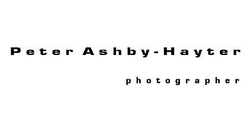Copy of `Peter Ashby-Hayter - Photo glossary`
The wordlist doesn't exist anymore, or, the website doesn't exist anymore. On this page you can find a copy of the original information. The information may have been taken offline because it is outdated.
|
|
|
Peter Ashby-Hayter - Photo glossary
Category: Hobbies and Crafts > Photography
Date & country: 20/09/2007, UK
Words: 305
|
D-SLRD-SLR is a Digital SLR camera. (see SLR & Digital SLR)
E-TTLE-TTL (Evaluative-Through The Lens) flash metering. A Canon EOS flash exposure system that uses a brief pre-flash before the main flash in order to obtain a more correct exposure. (see Balanced Fill Flash & EOS)
E6The number given to a Chemical process for developing colour transparency film. (created by Kodak but adopted universally by every other manufacturer).
f- StopA number that indicates the size of the lens opening . The common f-numbers on 35mm cameras are f1.4, f2, f2.8, f4, f5.6, f8, f11, f16, and f22. The larger the f-number, the smaller the lens opening, f22 is the smallest in this series. Also called the aperture, they work in conjunction with shutter speeds to indicate exposure settings. The number sequence is printed on the lens barrel, each higher f number halves the exposure of the preceding one. The f-number itself is effectively the number of times the aperture diameter will divide into the lens focal length. For example, f4 aperture diameter is one quarter the focal length (i.e. 25mm aperture diameter in a 100mm focal length lens). (see: Aperture)
T SettingA 'Time' setting mark found on some shutter controls. This setting is used for shutter speeds that are longer than the specified timed settings. The first press on the shutter leaves the shutter open, and it stays open until the shutter is pressed for a second time. (see Shutter)

